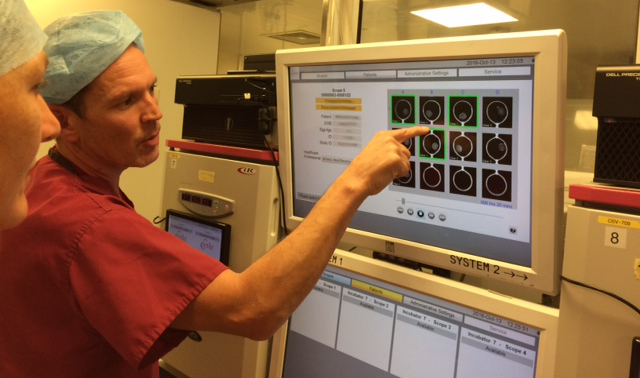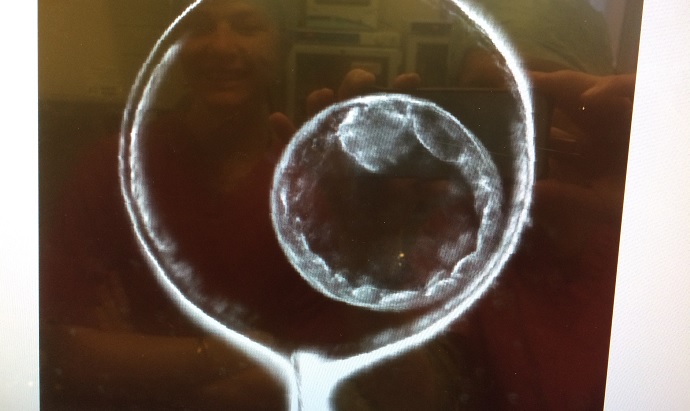Bourn Hall is the first IVF clinic in the country to introduce a new incubator and embryo assessment technology from Merck. The GERI incubator has integral cameras in each chamber so the embryos can be viewed without exposing them to light and the Eeva test makes it easier to grade embryos, improving chances of implantation.
Martyn Blayney, Head of Science at Bourn Hall comments: “When culturing embryos we try to disturb them as little as possible and minimise their exposure to light in order to emulate the natural environment.
“However, at present, embryo development can only be assessed under a microscope which necessitates removing them from the controlled environment of the incubator.
“With the new GERI+ incubator each patient’s embryos are kept together in a dedicated chamber, like a personal incubator, whilst an internal time-lapse camera monitors and records their development.
“This means that they are totally undisturbed throughout their time in the laboratory ensuring critical parameters such as temperature, pH and atmosphere are completely stable.”
GERI offers time-lapse photography
Images are taken every 5 minutes and provide time-lapse footage. These are continually analysed using the Early Embryo Viability (EEVA) test, which uses a software algorithm to predict which embryos are developing most vigorously. The embryologist can also view the time-lapse photography to check that the cells have been dividing evenly.
The embryo assessment technology provides the embryologist with an additional means for deciding which embryo to select for transfer to the womb. Although the Bourn Hall embryologists will still rely on expertise they have developed by doing hundreds of successful embryo transfers each month, the Eeva test does provide additional, objective information to aid decision-making.

For example, the highest IVF success rates occur when the embryo is transferred at the 5-day blastocyst stage. This is the point where cells from the embryo start to differentiate, with some becoming part of the placenta and others the foetus, ready for implantation in the womb.
Currently the embryologists wait 5 days to see which embryos reach this stage. If it were possible to predict this with accuracy the embryos could be transferred to the woman earlier, reducing the time spent in incubation and potentially increasing success rates.
Improving chances
GERI has not yet been conclusively proven to increase success rates but there is some suggestion that the combination of stable environmental conditions and continuous monitoring gives the embryos the best possible start.
Poor implantation is a common reason why pregnancies are lost at an early stage. Embryos graded Category 1 using the Eeva test had a 60% implantation rate for patients under 35**.
For more information
Read our patient information for more information IS034R6.00 – Geri+ and Early Embryo Viability (Eeva) Test
Please note this treatment is an additional cost and not covered by any NHS funding or Access Package.
References
[*] Conaghan et al., Fertility & Sterility, 2013
[**] Behr, et al. September 2015 Volume 104, Issue 3, Supplement, Page e152






